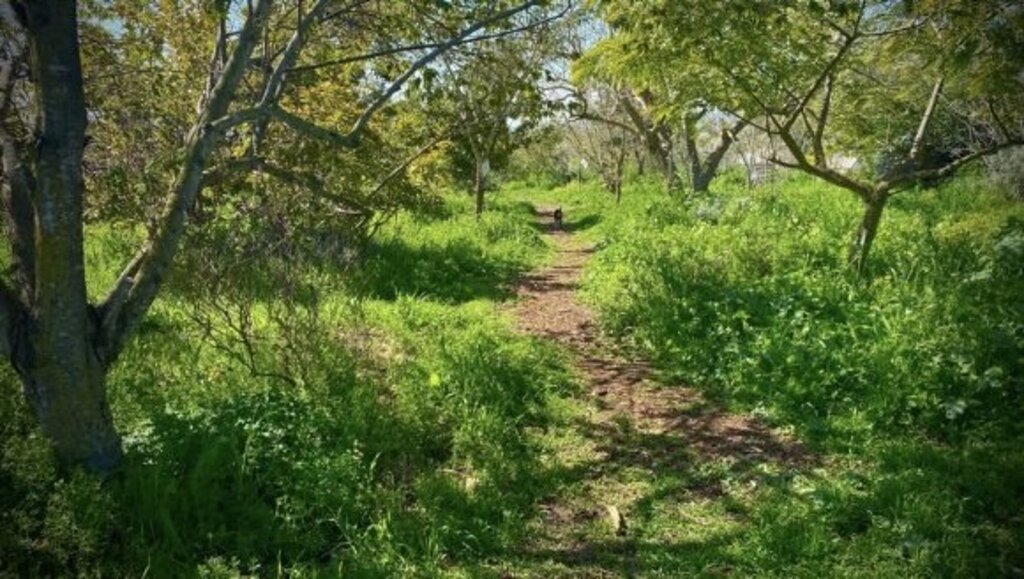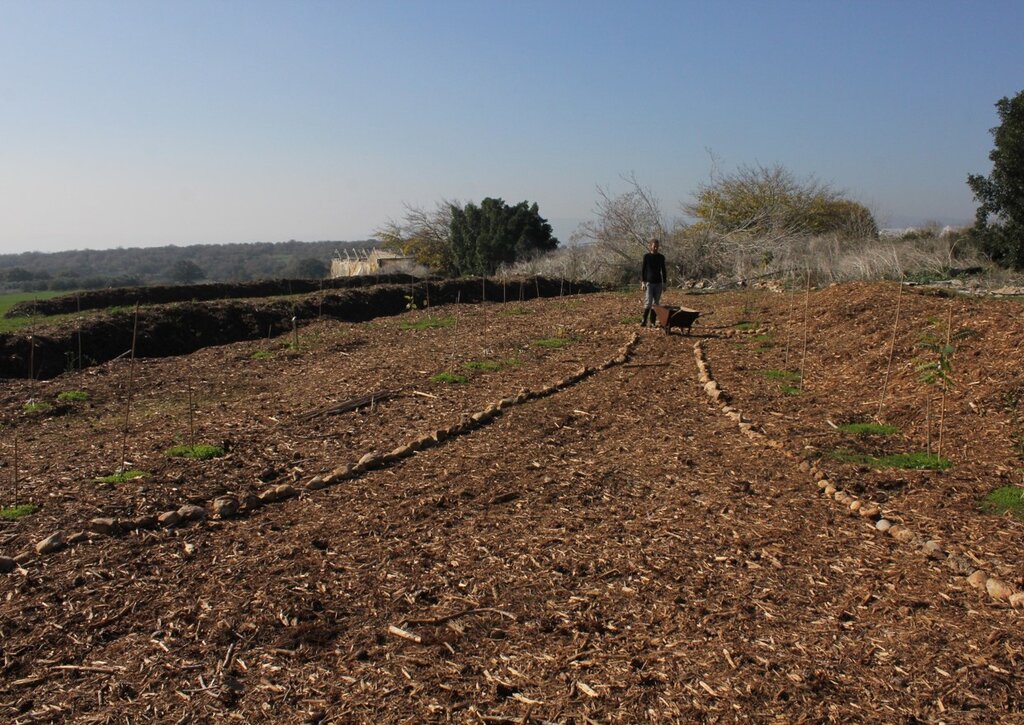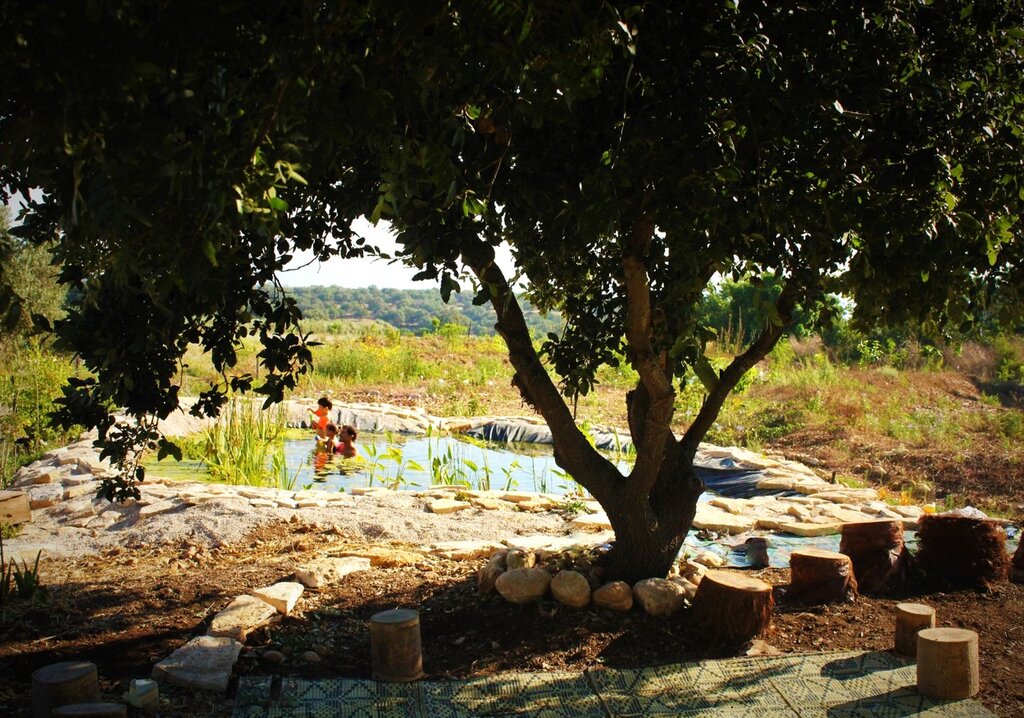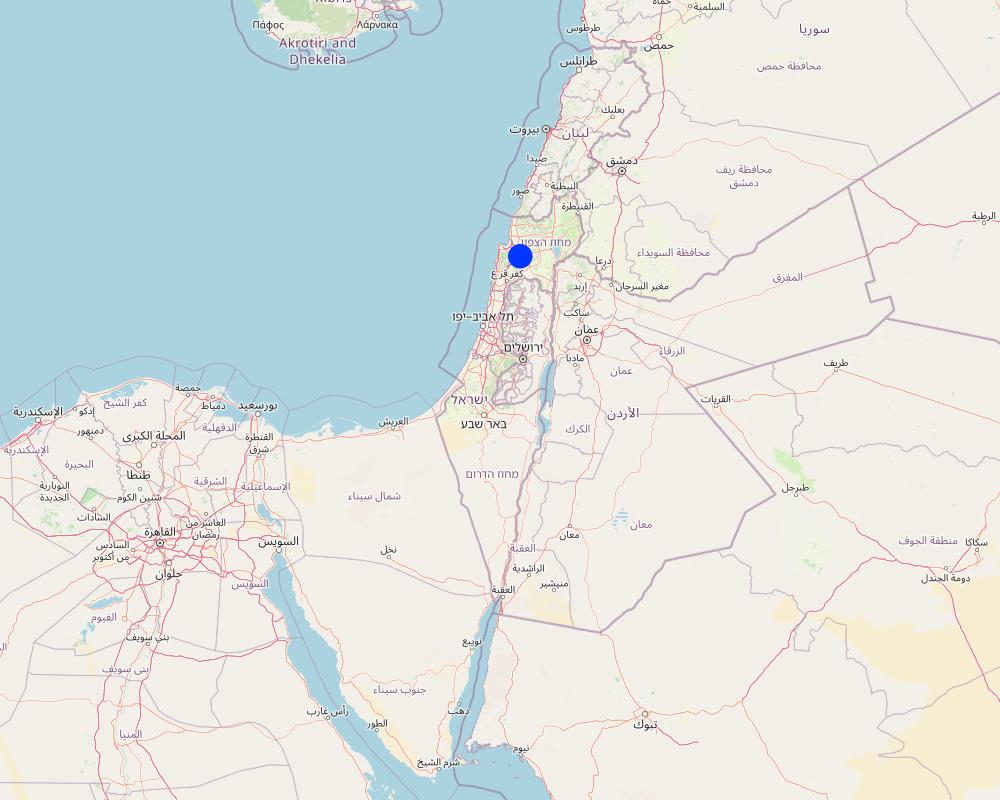Conversion of conventional monoculture farmland into a food forest [Israel]
- Criação:
- Atualização:
- Compilador/a: Tom Cohen
- Editor: –
- Revisores: William Critchley, Rima Mekdaschi Studer
Bethlehem of Galilee Food Forest
technologies_7674 - Israel
Veja as seções
Expandir tudo Recolher tudo1. Informação geral
1.2 Detalhes do contato das pessoas capacitadas e instituições envolvidas na avaliação e documentação da tecnologia
Especialista em GST:
Brook Anna
University of Haifa
Israel
usuário de terra:
Bethlehem of Galilee Food Forest
Israel
Nome da(s) instituição(ões) que facilitou(ram) a documentação/ avaliação da Tecnologia (se relevante)
University of Haifa (uhaifa)1.3 Condições em relação ao uso da informação documentada através de WOCAT
O/a compilador/a e a(s) pessoa(s) capacitada(s) aceitam as condições relativas ao uso de dados documentados através da WOCAT:
Sim
1.4 Declaração de sustentabilidade da tecnologia descrita
A tecnologia descrita aqui é problemática em relação a degradação da terra de forma que não pode ser declarada uma tecnologia de gestão sustentável de terra?
Não
Comentários:
This intervention is explicitly designed to reverse and restore previously degraded soils (monoculture exhaustion, fertility decline, low biodiversity).
2. Descrição da tecnologia de GST
2.1 Descrição curta da tecnologia
Definição da tecnologia:
Converting conventional monoculture farmland into a food forest-based agroforestry system restores soil health, increases vegetation cover, enhances biodiversity while diversifying production. The intervention improves soil organic matter and ecological resilience through multi-storey planting, reduced soil disturbance, and nature-based land management.
2.2 Descrição detalhada da tecnologia
Descrição:
The development of a “food forest” was in response to visible soil degradation caused by years of wheat-based monoculture in Bethlehem of Galilee. The previous land use consisted of annual wheat production, tractor-powered deep ploughing, and routine use of herbicides and pesticides. Over time, these practices depleted soil organic matter, reduced microbial activity, and increased vulnerability to erosion, compaction, and moisture loss. The current food forest, covering approximately 1.5 acres (0.6 hectare), represents a transformative shift from this intensive, extractive system toward a sustainable, perennial, multi-strata agroforestry model.
The primary purpose of this site is research and education. It is not intended to be a commercial enterprise, but to demonstrate principles and practices of sustainable land management. The income generated is not from crops but from research grants, workshops and community activities.
The site has been under continuous restoration for approximately eight years, during which it has gradually developed into a multi-layered food forest. The upper canopy includes species such as ficus, tipa, mulberry, pecan, plane trees, and nitrogen-fixing “ice-cream bean” (Inga edulis), which together generate shade, biomass, and structural diversity. The productive mid-storey contains fruit-bearing species including lemon, plum, pomegranate, avocado, and additional deciduous trees. Beneath these layers, aromatic shrubs such as lavender and rosemary provide perennial cover, habitat complexity, and year-round biomass production. A dedicated lower layer supports seasonal vegetables: carrots, radishes, turnips, lettuces and other greens, interplanted within tree alleys and cultivated using organic methods.
Production follows a diversified model typical of food forests. Tree crops currently yield modest but consistent quantities of lemons, plums, mulberries, pomegranates, and herbs, primarily for consumption by visitors, volunteers, and workers on site rather than large-scale commercial sale. The adjoining vegetable-growing area produces additional crops for small-scale marketing, providing a modest revenue stream while maintaining ecological integrity. As the system is still maturing, productive output is expected to increase over the coming years.
The project is privately managed by a couple in their thirties, who own and oversee all aspects of the site. Labour requirements were most intensive during the establishment phase of planting, mulching, earth-shaping, and infrastructure setup. As the food forest enters a more stable successional stage, labour demands have gradually decreased, with current activities centred on pruning, biomass recycling, vegetable cultivation, and occasional enrichment planting. No chemical inputs are applied at any stage.
Irrigation was originally supported by a drip system installed to establish young trees and early perennial layers. Today, irrigation needs have significantly decreased due to higher soil organic matter, increased shade, and improved microclimate regulation. Drip irrigation is now used only minimally and mainly within the annual vegetable plots, while most perennial components rely primarily on natural rainfall.
Overall, this food forest demonstrates a replicable nature-based solution for Mediterranean environments, showcasing how degraded wheat monoculture fields can be restored into resilient, biodiverse, and ecologically functional agroforestry systems. The long-term transition highlights substantial gains in soil health, water retention, and landscape diversity, while supporting small-scale production and community-oriented engagement.
2.3 Fotos da tecnologia
2.5 País/região/locais onde a tecnologia foi aplicada e que estão cobertos nesta avaliação
País:
Israel
Região/Estado/Província:
Galilee
Especificação adicional de localização:
Bethlehem of Galilee
Especifique a difusão da tecnologia:
- Uniformemente difundida numa área
Se a Tecnologia estiver uniformemente distribuída por uma área, especifique a área coberta (em km2):
0,01
Se a área precisa não for conhecida, indicar a área aproximada coberta:
- < 0,1 km2 (10 ha)
O(s) local(is) tecnológico(s) está(ão) localizado(s) em uma área permanentemente protegida?
Não
Map
×2.6 Data da implementação
Indique o ano de implementação:
2017
Caso o ano exato seja desconhecido, indique a data aproximada:
- menos de 10 anos atrás (recentemente)
2.7 Introdução da tecnologia
Especifique como a tecnologia foi introduzida:
- atráves de inovação dos usuários da terra
- durante experiências/ pesquisa
- através de projetos/intervenções externas
Comentários (tipos de projeto, etc.):
The landowners developed the site as part of a holistic environmental vision and continue to refine it through ongoing learning, experimentation, and renewal. They actively initiate collaborations with research institutions in Israel and abroad to support long-term monitoring of the site and to advance the food-forest practice within a scientific and evidence-based framework.
3. Classificação da tecnologia de GST
3.1 Principal/principais finalidade(s) da tecnologia
- Reduz, previne, recupera a degradação do solo
- Preserva ecossistema
- Preservar/melhorar a biodiversidade
- Adaptar a mudanças climáticas/extremos e seus impactos
- Cria impacto social benéfico
3.2 Tipo(s) atualizado(s) de uso da terra onde a tecnologia foi aplicada
Uso do solo misturado dentro da mesma unidade de terra:
Sim
Especificar o uso misto da terra (culturas/ pastoreio/ árvores):
- Agrofloresta
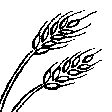
Terra de cultivo
- Cultura anual
- Cultura de árvores e arbustos
Cultivo anual - Especificar culturas:
- legumes e leguminosas - ervilhas
- plantas e ervas medicinais/ aromáticas/pesticidas
- vegetais - vegetais de folhas (saladas, couve, espinafre, outros)
- legumes - raízes (cenouras, cebolas, beterraba, outros)
Cultivo de árvores e arbustos - Especificar culturas:
- abacate
- cítrico
- figos
- frutas de pomóideas (maçãs, peras, marmelos, etc.)
- frutas com caroço (pêssego, damasco, cereja, ameixa, etc.)
- frutos secos (castanhas do Brasil, pistache, nozes, amêndoas, etc.)
Número de estações de cultivo por ano:
- 3
Especifique:
Up to three for the fastest growing crops
O cultivo entre culturas é praticado?
Sim
Em caso afirmativo, especifique quais são as culturas intercultivadas:
The whole farm forest embodies intercropping throughout its multi-strata structure
O rodízio de culturas é praticado?
Sim
Caso afirmativo, especifique:
Various annual crops as described above - and an adaptive succession strategy
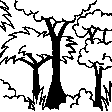
Floresta/bosques
- Plantação de árvores, reflorestamento
Plantação de árvores, florestamento: Especificar a origem e composição das espécies:
- Variedades mistas
Tipo de plantação de árvores, florestamento:
- plantação de floresta continental temperada
- Ficus, Tipu (Tipuana tipu), Plane tree (Platanus spp.), Sissoo (Dalbergia sissoo), Ice-cream bean
As árvores especificadas acima são decíduas ou perenes?
- decíduas mistas/perene
Produtos e serviços:
- Frutas e nozes
- Outros produtos florestais
- Conservação/proteção da natureza
- Lazer/turismo
3.3 O uso do solo mudou devido à implementação da Tecnologia?
O uso do solo mudou devido à implementação da Tecnologia?
- Sim (Por favor, preencha as perguntas abaixo com relação ao uso do solo antes da implementação da Tecnologia)
Uso do solo misturado dentro da mesma unidade de terra:
Não

Terra de cultivo
- Cultura anual
Cultivo anual - Especificar culturas:
- cereais - trigo (primavera)
Sistema de cultivo anual:
Trigo ou rotação similar com feno/pasto
O cultivo entre culturas é praticado?
Não
O rodízio de culturas é praticado?
Sim
Caso afirmativo, especifique:
Occasionally (see above)
3.4 Abastecimento de água
Abastecimento de água para a terra na qual a tecnologia é aplicada:
- Misto de precipitação natural-irrigado
Comentários:
Irrigation was originally supported by a drip system installed to establish young trees and early perennial layers. Today, irrigation needs have significantly decreased due to higher soil organic matter, increased shade, and improved microclimate regulation. Drip irrigation is now used only minimally and mainly within the annual vegetable plots, while most perennial components rely primarily on natural rainfall.
3.5 Grupo de GST ao qual pertence a tecnologia
- Agrofloresta
- Solo/cobertura vegetal melhorada
- Perturbação mínima ao solo
3.6 Medidas de GST contendo a tecnologia
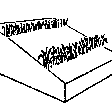
Medidas vegetativas
- V1: cobertura de árvores/arbustos
- V2: gramíneas e plantas herbáceas perenes

Medidas de gestão
- M1: Mudança no tipo de uso da terra
- M2: Mudança de gestão/nível de intensidade
- M5: Controle/mudança de composição de espécies
3.7 Principais tipos de degradação da terra abordados pela tecnologia
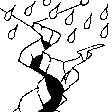
Erosão do solo pela água
- Wt: Perda do solo superficial/erosão de superfície
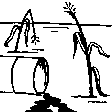
Deteriorização química do solo
- Cn: declínio de fertilidade e teor reduzido de matéria orgânica (não causado pela erosão)
- Cs: salinização/alcalinização
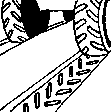
Deteriorização física do solo
- Pc: Compactação
- Pi: selagem do solo
- Ps: Subsidência de solos orgânico, sedimentação do solo
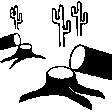
Degradação biológica
- Bc: redução da cobertura vegetal
- Bh: perda dos habitats
- Bq: quantidade/ declínio da biomassa
- Bs: Qualidade e composição de espécies/declínio de diversidade
Comentários:
For this pilot, the technology primarily addresses soil degradation (chemical + physical + biological) that resulted from long-term monoculture and herbicide-based management.
3.8 Redução, prevenção ou recuperação da degradação do solo
Especifique o objetivo da tecnologia em relação a degradação da terra:
- Reduzir a degradação do solo
- Recuperar/reabilitar solo severamente degradado
4. Especificações técnicas, implementação de atividades, entradas e custos
4.1 Desenho técnico da tecnologia
Especificações técnicas (relacionada ao desenho técnico):
The general site plan (above) illustrates the full spatial organization of the food forest, structured into clearly defined functional zones that together create a balanced ecological and productive landscape (Note: original plan reproduced with captions in Hebrew). The outer perimeter consists of a protective tree belt designed to provide wind buffering, habitat continuity, and microclimate regulation. Inside this perimeter lies a series of densely planted clusters of mixed-species trees and support plants, forming the core forested zones of the design. These clusters contain a combination of canopy species, fruit trees, nitrogen-fixing support species, and understory elements arranged to promote ecological interactions and long-term resilience. Several open areas are intentionally integrated throughout the site, providing space for circulation, light penetration, future expansion, and community activities. The plan also includes a designated agricultural strip for annual vegetable production, strategically placed to benefit from the moderated microclimate created by the surrounding tree layers. Additional functional elements such as a compost area, shaded seating or gathering points, and access paths appear throughout the design, supporting both maintenance and educational use. Overall, the plan demonstrates a holistic integration of productive, ecological, and social spaces, emphasizing diversity, spatial layering, and regenerative land-use principles.
Autor:
Nitzan Betzer
Data:
01/06/2017
Especificações técnicas (relacionada ao desenho técnico):
The planting plan (below) illustrates the full structural design of the food forest, showing a diverse mixture of perennial species arranged according to ecological function and spatial layout (Note: original plan reproduced with captions in Hebrew). Each color on the map represents a different botanical or functional category. The green circles indicate the major canopy and shade-providing trees that form the upper layer of the system. The red circles mark the fruit-bearing species distributed across the plot, including pomegranate, avocado, fig, loquat, mango, mulberry and others, representing the primary productive component of the mid-storey. The orange circles correspond to nitrogen-fixing trees and shrubs, strategically positioned to enrich soil fertility and support surrounding species through natural nutrient cycling. The yellow circles mark ornamental or habitat-supporting species that enhance biodiversity, microclimate regulation and ecological resilience. Together, these categories create a multi-layered mosaic in which canopy, fruit, support species and habitat elements interweave across the site. The design also includes designated open areas, compost space, perimeter rows and an agricultural strip for annual vegetables, demonstrating an intentional balance between ecological restoration, food production and functional zoning.
Autor:
Nitzan Betzer
Data:
01/06/2017
4.2 Informação geral em relação ao cálculo de entradas e custos
Especifique como custos e entradas foram calculados:
- por área de tecnologia
Indique o tamanho e a unidade de área:
1.5 acres
Se utilizar uma unidade de área local, indicar fator de conversão para um hectare (por exemplo, 1 ha = 2,47 acres): 1 ha =:
1 acre = 0.4 hectares
Especifique a moeda utilizada para os cálculos de custo:
- USD
Indique a média salarial da mão-de-obra contratada por dia:
158.2
4.3 Atividades de implantação
| Atividade | Periodicidade (estação do ano) | |
|---|---|---|
| 1. | Initial site assessment and mapping of soil condition and exposure | Late winter / early spring |
| 2. | Discontinuation of tillage and herbicide applications | Immediately prior to establishment |
| 3. | Soil preparation without deep tillage (light loosening, mulching base layer) | Early spring |
| 4. | Planting of trees in primary layout (skeleton layer) | Spring |
| 5. | Planting of shrubs and understory companion species | Late spring / early summer |
| 6. | Installation of organic mulch cover to protect soil and retain moisture | After planting (early summer) |
| 7. | Enrichment planting / filling gaps with additional groundcover species | Late summer / following spring |
| 8. | Protection of young trees/shrubs if needed (guards, shading, temporary watering) | First growing season |
| 9. | Establishment of biomass cycling (chop-and-drop, composting on-site) | After vegetation takes root |
| 10. | Transition into maintenance phase (reduced intervention, natural succession) | Once canopy begins forming |
4.4 Custos e entradas necessárias para a implantação
| Especifique a entrada | Unidade | Quantidade | Custos por unidade | Custos totais por entrada | % dos custos arcados pelos usuários da terra | |
|---|---|---|---|---|---|---|
| Mão-de-obra | Manual labour | Person-days | 139,0 | 158,2 | 21989,8 | 100,0 |
| Equipamento | Tools and maintenance equipment | 1,0 | 5000,0 | 5000,0 | 100,0 | |
| Equipamento | Tractor (for construction) | 1,0 | 7200,0 | 7200,0 | 100,0 | |
| Material vegetal | Seedlings, cuttings, and seeds | 1,0 | 14000,0 | 14000,0 | 100,0 | |
| Fertilizantes e biocidas | Compost | 1,0 | 10500,0 | 10500,0 | 100,0 | |
| Material de construção | Irrigation system | 1,0 | 14500,0 | 14500,0 | 100,0 | |
| Material de construção | Pruned biomass mulch | 1,0 | 6500,0 | 6500,0 | 100,0 | |
| Custos totais para a implantação da tecnologia | 79689,8 | |||||
| Custos totais para o estabelecimento da Tecnologia em USD | 79689,8 | |||||
Se o usuário da terra arca com menos que 100% dos custos, indique quem cobre os custos remanescentes:
Land user bore all costs: but note the primary purpose of this site is research and education. It is not intended to be a commercial enterprise, but to demonstrate principles and practices of sustainable land management. The income generated is not from crops but from research grants, workshops and community activities.
Comentários:
No chemical fertilizers or pesticides are used; fertilization is based solely on compost
4.5 Atividades recorrentes/manutenção
| Atividade | Periodicidade/frequência | |
|---|---|---|
| 1. | Mulching with organic biomass (leaf litter, pruning residues, woodchips, etc.) | 2–3 times per year, mainly after rainy season and mid-summer |
| 2. | Selective pruning of trees and shrubs to maintain structure and light balance | Annually / as needed (late winter or autumn) |
| 3. | Enrichment planting and succession planting of understorey species | Seasonally, as ecosystem matures or gaps appear |
| 4. | Weeding by ecological suppression (groundcover strengthening) rather than removal | Continuous, low-intensity maintenance |
| 5. | Soil moisture conservation (biomass renewal / occasional supportive watering in drought years) | Seasonally during dry periods (as needed) |
| 6. | Monitoring soil condition and vegetation health | Ongoing, at least once per season |
| 7. | Replacement of failed or weak young plants | Annually during early growth seasons |
| 8. | Maintenance of biodiversity guilds / companion planting structure | Continuous, adaptive to natural succession |
4.6 Custos e entradas necessárias pata a manutenção/atividades recorrentes (por ano)
| Especifique a entrada | Unidade | Quantidade | Custos por unidade | Custos totais por entrada | % dos custos arcados pelos usuários da terra | |
|---|---|---|---|---|---|---|
| Mão-de-obra | Manual labour | Person-days | 110,0 | 158,2 | 17402,0 | 100,0 |
| Equipamento | Equipment renewal and maintenance | 1,0 | 5000,0 | 5000,0 | 100,0 | |
| Material vegetal | Cuttings and seeds | 1,0 | 4000,0 | 4000,0 | 100,0 | |
| Outros | Water bills | 1,0 | 5500,0 | 5500,0 | 100,0 | |
| Outros | Products selling kits | 1,0 | 2000,0 | 2000,0 | 100,0 | |
| Custos totais para a manutenção da tecnologia | 33902,0 | |||||
| Custos totais de manutenção da Tecnologia em USD | 33902,0 | |||||
Comentários:
The establishment costs refer to the initial food forest area of approximately 1.5 acres, while the annual maintenance costs refer to the forest in its current state, covering about 3 acres. Land user bore all costs: but note that the primary purpose of this site is research and education. It is not intended to be a commercial enterprise, but to demonstrate principles and practices of sustainable land management. The income generated is not from crops but from research grants, workshops and community activities.
4.7 Fatores mais importantes que afetam os custos
Descreva os fatores mais determinantes que afetam os custos:
The most significant cost factor, both during establishment and ongoing maintenance, is labour. All work is carried out manually using hand tools, and apart from the initial establishment phase, no heavy machinery is used
5. Ambiente natural e humano
5.1 Clima
Precipitação pluviométrica anual
- <250 mm
- 251-500 mm
- 501-750 mm
- 751-1.000 mm
- 1.001-1.500 mm
- 1.501-2.000 mm
- 2.001-3.000 mm
- 3.001-4.000 mm
- > 4.000 mm
Indique o nome da estação meteorológica de referência considerada:
The climatic information for the food forest site was obtained from two sources: official data provided by the Israel Meteorological Service (IMS) and on-site measurements collected through a dedicated rain gauge installed as part of the research infrastructure. Together, these sources provide accurate local rainfall and climate monitoring for the plot.
Zona agroclimática
- Subúmido
5.2 Topografia
Declividade média:
- Plano (0-2%)
- Suave ondulado (3-5%)
- Ondulado (6-10%)
- Moderadamente ondulado (11-15%)
- Forte ondulado (16-30%)
- Montanhoso (31-60%)
- Escarpado (>60%)
Formas de relevo:
- Planalto/planície
- Cumes
- Encosta de serra
- Encosta de morro
- Sopés
- Fundos de vale
Zona de altitude:
- 0-100 m s.n.m.
- 101-500 m s.n.m.
- 501-1.000 m s.n.m.
- 1.001-1.500 m s.n.m.
- 1.501-2.000 m s.n.m.
- 2.001-2.500 m s.n.m.
- 2.501-3.000 m s.n.m.
- 3.001-4.000 m s.n.m.
- > 4.000 m s.n.m.
Indique se a tecnologia é aplicada especificamente em:
- Não relevante
5.3 Solos
Profundidade do solo em média:
- Muito raso (0-20 cm)
- Raso (21-50 cm)
- Moderadamente profundo (51-80 cm)
- Profundo (81-120 cm)
- Muito profundo (>120 cm)
Textura do solo (solo superficial):
- Médio (limoso, siltoso)
Textura do solo (>20 cm abaixo da superfície):
- Médio (limoso, siltoso)
Matéria orgânica do solo superficial:
- Baixo (<1%)
5.4 Disponibilidade e qualidade de água
Lençol freático:
5-50 m
Disponibilidade de água de superfície:
Precário/nenhum
Qualidade da água (não tratada):
apenas para uso agrícola (irrigação)
A qualidade da água refere-se a:
tanto de águas subterrâneas quanto de superfície
A salinidade da água é um problema?
Não
Ocorre inundação da área?
Não
5.5 Biodiversidade
Diversidade de espécies:
- Baixo
Diversidade de habitat:
- Baixo
Comentários e outras especificações sobre biodiversidade:
Both species diversity and habitat diversity have transformed due to the establishment of the food forest, and are now both high. This is a very agrobiodiverse system.
5.6 Características dos usuários da terra que utilizam a tecnologia
Sedentário ou nômade:
- Sedentário
Orientação de mercado do sistema de produção:
- Subsistência (autoabastecimento)
Rendimento não agrícola:
- >50% de toda renda
Nível relativo de riqueza:
- Média
Indivíduos ou grupos:
- Indivíduo/unidade familiar
Nível de mecanização:
- Trabalho manual
Gênero:
- Mulheres
- Homens
Idade dos usuários da terra:
- meia-idade
5.7 Área média de terrenos utilizados pelos usuários de terrenos que aplicam a Tecnologia
- < 0,5 ha
- 0,5-1 ha
- 1-2 ha
- 2-5 ha
- 5-15 ha
- 15-50 ha
- 50-100 ha
- 100-500 ha
- 500-1.000 ha
- 1.000-10.000 ha
- > 10.000 ha
É considerado pequena, média ou grande escala (referente ao contexto local)?
- Pequena escala
Comentários:
The land user manages approximately 2–5 hectares in total, of which a portion is undergoing transition into a food forest system; this is considered small-scale in the local agricultural context
5.8 Propriedade de terra, direitos de uso da terra e de uso da água
Propriedade da terra:
- Indivíduo, intitulado
Direitos do uso da terra:
- Indivíduo
Direitos do uso da água:
- Indivíduo
Os direitos de uso da terra são baseados em um sistema jurídico tradicional?
Não
5.9 Acesso a serviços e infraestrutura
Saúde:
- Pobre
- Moderado
- Bom
Educação:
- Pobre
- Moderado
- Bom
Assistência técnica:
- Pobre
- Moderado
- Bom
Emprego (p. ex. não agrícola):
- Pobre
- Moderado
- Bom
Mercados:
- Pobre
- Moderado
- Bom
Energia:
- Pobre
- Moderado
- Bom
Vias e transporte:
- Pobre
- Moderado
- Bom
Água potável e saneamento:
- Pobre
- Moderado
- Bom
Serviços financeiros:
- Pobre
- Moderado
- Bom
6. Impactos e declarações finais
6.1 Impactos no local mostrados pela tecnologia
Impactos socioeconômicos
Renda e custos
Despesas com insumos agrícolas
Comentários/especificar:
Agricultural input expenses are very limited in this system. Since the site operates as a food forest rather than a conventional agricultural plot, nearly no external inputs are purchased. The management relies on ecological processes, on-site biomass, mulching, and manual care. Inputs are therefore minimal and do not reflect commercial-scale agricultural expenditure.
Diversidade de fontes de rendimento
Comentários/especificar:
The plot was originally managed as a monoculture field that depended economically on agricultural production. Today, the food forest operates on a completely different model: its income is derived primarily from research activities, educational programs, workshops, and community engagement. Economic sustainability is no longer based on agricultural yield, as crop production is not the financial foundation of the site anymore.
Impactos socioculturais
Oportunidades culturais
Comentários/especificar:
The food forest contributes significantly to cultural opportunities in the area. It serves as a community-oriented space that hosts educational events, workshops, volunteer activities, and gatherings focused on sustainability and ecological awareness. The site fosters cultural exchange, strengthens community cohesion, and provides a shared environment for learning, creativity, and connection to nature.
Instituições comunitárias
Comentários/especificar:
Note: The food forest strengthens community institutions by collaborating with local educational programs, volunteer groups, and research initiatives. It provides a stable platform for schools, community organizations, and environmental groups to conduct activities, thereby reinforcing their role in community life and expanding their capacity for outreach and engagement.
Conhecimento de GST/ degradação da terra
Comentários/especificar:
The food forest contributes to improved SLM and land-degradation knowledge by serving as a living demonstration site where restoration practices can be observed, tested, and monitored over time. It provides real-world evidence on soil recovery, biodiversity enhancement, and regenerative management, supporting both scientific research and practical learning for land users, students, and professionals.
Impactos ecológicos
Ciclo hídrico/escoamento
Escoamento superficial
Comentários/especificar:
The food forest reduces surface runoff through continuous vegetative cover, increased soil organic matter, and improved infiltration. The multi-layered perennial structure slows water movement, stabilizes the soil, and enhances water absorption, thereby decreasing erosion risk and minimizing overland flow during rainfall events.
Evaporação
Comentários/especificar:
The food forest reduces soil surface evaporation through dense vegetative cover, shading from the multi-layered canopy, and increased soil organic matter. Mulching and groundcover plants further protect the soil surface, lowering temperatures at ground level and limiting direct exposure to sun and wind, which significantly decreases soil surface evaporative water loss.
Solo
Umidade do solo
Comentários/especificar:
The food forest increases soil moisture by improving infiltration, enhancing organic matter content, and maintaining continuous groundcover. The multi-layered canopy moderates temperature and reduces evaporation, while mulch and living groundcovers retain water in the upper soil layers. Together, these features create a cooler, moister soil environment that supports long-term ecological function.
Cobertura do solo
Comentários/especificar:
The food forest improves ground cover through the establishment of multi-layered perennial vegetation, including trees, shrubs, and living groundcovers. Mulch application and natural leaf litter further protect the soil surface, ensuring year-round coverage that reduces erosion, enhances soil health, and supports ecological stability.
Ressecamento/ selagem do solo
Comentários/especificar:
The food forest reduces soil crusting and surface sealing by increasing organic matter, maintaining continuous vegetative cover, and enhancing biological activity in the upper soil layers. Leaf litter, mulch, and root penetration prevent the formation of hard surface layers, while improved soil structure allows better infiltration and aeration, minimizing the risk of crust development.
Ciclo e recarga de nutrientes
Comentários/especificar:
The food forest enhances nutrient cycling and soil nutrient recharge through continuous biomass production, leaf litter accumulation, and root turnover. Nitrogen-fixing species, mulch, and on-site organic matter decomposition replenish soil nutrients naturally, while diverse plant strata promote active microbial communities that accelerate nutrient transformation and availability.
Matéria orgânica do solo/carbono abaixo do solo
Comentários/especificar:
The food forest increases soil organic matter and below-ground carbon through continuous inputs of leaf litter, root biomass, and decomposing mulch. The perennial, multi-layered vegetation system supports sustained carbon incorporation into the soil, while reduced disturbance and enhanced microbial activity further promote long-term carbon storage and soil organic matter accumulation.
Biodiversidade: vegetação, animais
Cobertura vegetal
Comentários/especificar:
The food forest substantially increases vegetation cover by establishing multiple perennial layers - canopy trees, mid-storey species, shrubs, and groundcovers - that provide continuous, year-round biomass. This expanded plant cover protects the soil, supports ecological processes, and creates a more resilient and biodiverse landscape compared to the former monoculture field.
Biomassa/carbono acima do solo
Comentários/especificar:
The food forest increases above-ground biomass and carbon storage through the establishment of diverse perennial vegetation, including canopy trees, fruit species, shrubs, and herbaceous layers. As these plants grow, they accumulate significant living biomass, sequester carbon, and contribute to long-term ecological stability through continuous organic matter production and structural complexity.
Diversidade vegetal
Comentários/especificar:
The food forest greatly increases plant diversity by integrating a wide range of tree species, fruit trees, nitrogen-fixing plants, shrubs, herbs, and groundcovers. This multi-strata design replaces the former single-crop system with a complex, species-rich community that enhances ecological resilience, supports wildlife, and promotes functional biodiversity across the site.
Diversidade de habitat
Comentários/especificar:
The food forest increases habitat diversity by creating a multi-layered structure that supports varied ecological niches. The combination of canopy trees, understory species, shrubs, groundcovers, open areas, and water features provides habitats for a wide range of insects, birds, and small wildlife. This structural and functional diversity replaces the uniform habitat of the former monoculture and greatly enhances overall ecosystem complexity.
Clima e redução de riscos de desastre
Emissão de carbono e gases de efeito estufa
Comentários/especificar:
The food forest helps reduce carbon and greenhouse gas emissions by minimizing external inputs, eliminating chemical fertilizers, and avoiding soil disturbance that would otherwise release stored carbon. The perennial vegetation continuously sequesters carbon in both biomass and soil, while the system’s low-energy, regenerative management reduces emissions associated with conventional agricultural practices.
Especificar a avaliação dos impactos no local (medidas):
The assessment of on-site impacts combines both social-cultural learning processes and quantitative biophysical measurements. On the social, cultural, and economic side, the site hosts workshops, guided learning sessions, and community activities designed to understand the meaning, role, and value of the food forest for local stakeholders. These engagements provide qualitative insights into cultural benefits, community strengthening, and the educational function of the place. For the more tangible biophysical parameters – soil health, vegetation condition, biodiversity, and ecological recovery – the monitoring relies on analytical laboratory tests and systematic long-term sampling. Soil samples collected at different stages of the establishment process were analyzed for organic matter, nutrients, structure, and biological activity, providing a clear picture of soil improvement over time. In addition, the site is monitored through remote-sensing-based indicators developed in collaboration with the University of Haifa, which track temporal changes in vegetation cover, biomass, soil moisture proxies, and overall ecological function. Together, these qualitative and quantitative assessments offer a comprehensive understanding of the site’s development, documenting both the ecological restoration underway and the parallel social and educational impacts generated by the food forest.
6.2 Impactos externos mostrados pela tecnologia
Impacto dos gases de efeito estufa
Comentários/especificar:
Using IPCC Tier-1 methods (2006 Guidelines with the 2019 Refinement), we estimate annual removals from (i) mineral soil organic carbon (SOC) gains after conversion from tilled wheat to multistrata agroforestry, and (ii) incremental woody biomass growth. Mediterranean evidence suggests SOC increases on managed woody systems of ~0.2–1.0 t C ha⁻¹ yr⁻¹, while biomass increments in multistrata/silvo-arable agroforestry typically add ~0.8–2.5 t C ha⁻¹ yr⁻¹ in the establishment decades; together this yields ~1.0–3.5 t C ha⁻¹ yr⁻¹, i.e., ≈ 3.7–13 tCO₂e ha⁻¹ yr⁻¹ (3.67 conversion). For reporting we adopt the conservative lower bound until our paired soil cores (baseline vs. years 2/5/8) and tree allometry—supported by Sentinel-2 time-series—finish quantifying site-specific change. Sources: IPCC 2006/2019 AFOLU guidance; AR6 WGIII (AFOLU); Mediterranean meta-analyses of SOC/biomass in woody systems and agroforestry.
Especificar a avaliação dos impactos fora do local (medidas):
Off-site impacts were assessed through a combination of qualitative and quantitative indicators that capture how the food-forest system influences the surrounding landscape and community beyond the plot boundaries. Hydrological effects were inferred from reduced surface runoff and improved infiltration within the site, which collectively lower downstream sedimentation and erosion risks; these implications were evaluated using rainfall records, soil-moisture trends, and comparison of runoff behavior between the restored area and adjacent conventionally managed fields. Vegetation development and canopy expansion – monitored through Sentinel-2 time-series and UAV imagery – provide additional evidence of landscape-scale improvements such as enhanced microclimatic buffering and habitat connectivity. Social and cultural off-site impacts were evaluated through participation in workshops, educational programs, and community events, which extend ecological knowledge and stewardship beyond the site itself. Together, these measurements and observations offer a coherent picture of how the food forest contributes to broader environmental and community benefits outside its physical boundaries.
6.3 Exposição e sensibilidade da tecnologia às mudanças climáticas graduais e extremos/desastres relacionados ao clima (conforme o ponto de vista dos usuários da terra)
Mudança climática gradual
Mudança climática gradual
| Estação do ano | aumento ou diminuição | Como a tecnologia lida com isso? | |
|---|---|---|---|
| Temperatura anual | aumento | moderadamente | |
| Precipitação pluviométrica anual | redução/diminuição | bem |
Extremos (desastres) relacionados ao clima
Desastres meteorológicos
| Como a tecnologia lida com isso? | |
|---|---|
| Temporal local | moderadamente |
Desastres climatológicos
| Como a tecnologia lida com isso? | |
|---|---|
| Onde de calor | bem |
| Seca | bem |
6.4 Análise do custo-benefício
Como os benefícios se comparam aos custos de implantação (do ponto de vista dos usuários da terra)?
Retornos a curto prazo:
levemente negativo
Retornos a longo prazo:
positivo
Como os benefícios se comparam aos custos recorrentes/de manutenção(do ponto de vista dos usuários da terra)?
Retornos a curto prazo:
neutro/balanceado
Retornos a longo prazo:
positivo
Comentários:
The slightly negative short-term balance does not reflect external subsidies but rather the intentional design and purpose of the site. The food forest is not a commercial enterprise and was never intended to generate profit from agricultural production. Its primary function is research, education, and community engagement, and therefore its revenues come from workshops, collaborations, and research grants rather than crop sales. The short-term financial deficit simply reflects the fact that the landowners invest in a long-term ecological and educational project whose value is measured in environmental and social outcomes rather than immediate economic returns. It should not be interpreted as dependence on agricultural subsidies or market-based support.
6.5 Adoção da tecnologia
- casos isolados/experimental
Se disponível, determine a quantidade (número de unidades familiares e/ou área abordada):
One household: 1.5 acres
De todos aqueles que adotaram a Tecnologia, quantos o fizeram espontaneamente, ou seja, sem receber nenhum incentivo/ pagamento material?
- 0-10%
6.6 Adaptação
A tecnologia foi recentemente modificada para adaptar-se as condições variáveis?
Sim
Caso afirmativo, indique as condições variáveis as quais ela foi adaptada:
- Mudança climática/extremo
Especifique a adaptação da tecnologia (desenho, material/espécie, etc):
The design and composition of the food forest are continuously adapted as the system matures and as new insights emerge from ongoing learning by the landowners and collaborating researchers. Species selection, spatial arrangement, and management practices have been refined over time in response to observed ecological dynamics - such as canopy development, soil improvement, microclimatic changes, and species performance. Additional trees, shrubs, and groundcovers have been introduced to enhance diversity, strengthen ecological functions, and address emerging needs such as shade regulation, soil enrichment, or habitat creation. This adaptive approach reflects the core principle of the technology: the food forest is a living system that evolves through observation, experimentation, and evidence-based adjustments informed by both practical experience and scientific collaboration.
6.7 Pontos fortes/vantagens/oportunidades da tecnologia
| Pontos fortes/vantagens/oportunidades na visão do usuário da terra |
|---|
| Restores soil fertility and structure without relying on chemicals and reduces weed pressure naturally through permanent groundcover |
| Improves moisture retention and reduces drought stress over time and supports biodiversity and creates a healthier farm ecosystem |
| Transformational: turns degraded land into a productive long-term asset |
| Pontos fortes/vantagens/oportunidades na visão do/a compilador/a ou de outra pessoa capacitada |
|---|
| Demonstrates a replicable nature-based solution for restoring degraded agricultural soils in Mediterranean climates |
| Increases soil organic matter and biological activity, improving long-term soil function and carbon sequestration |
| Serves as a living demonstration site with high educational and upscaling potential for regenerative farming in the region |
6.8 Pontos fracos, desvantagens/riscos da tecnologia e formas de superá-los
| Pontos fracos/desvantagens/riscos na visão do usuário da terra | Como eles podem ser superados? |
|---|---|
| Slow establishment phase before benefits become visible | Patience + phased planting; choose fast-growing pioneer species to accelerate canopy formation |
| Requires knowledge and ecological management skills | Ongoing guidance from experts / capacity building / training |
| Young plants vulnerable to drought during first summers | Supplemental irrigation in the first years and thicker mulching to reduce evaporation |
| Pontos fracos/vantagens/riscos na visão do/a compilador/a ou de outra pessoa capacitada | Como eles podem ser superados? |
|---|---|
| Long ecological recovery timeline before system reaches full functionality | Use succession planning and pioneer/perennial nurse species to accelerate canopy closure and soil regeneration |
| Success depends on appropriate species selection for local microclimate and soil | Improve site-specific design using adaptive planting trials, monitoring, and locally adapted cultivars |
| Knowledge-intensive management compared to conventional systems | Provide technical training, extension support, and farmer-to-farmer learning |
| Restoration outcomes may vary with drought years and extreme heat events | Increase biomass cover, soil shading, and water retention strategies in early establishment years |
7. Referências e links
7.1 Métodos/fontes de informação
- visitas de campo, pesquisas de campo
Field visits and surveys were conducted once every season on-site with the primary land user (one key informant), supplemented by technical assessments from the research team
- entrevistas com usuários de terras
One-on-one interviews were conducted with the primary land user (one key informant) at least once a year, focusing on management decisions, perceived benefits and challenges, and changes observed since the start of the transition
- entrevistas com especialistas em GST
The expert input was provided by specialists involved in the University of Haifa restoration pilot
- compilação de relatórios e outra documentação existente
7.2 Referências às publicações disponíveis
Título, autor, ano, ISBN:
Zbedat, G., & Brook, A. (2025). Land Restoration Effectiveness Assessed by Satellite-Based Remote Sensing Technologies as A New Monitoring Approach. The International Archives of the Photogrammetry, Remote Sensing and Spatial Information Sciences, 48, 149-155.
Disponível de onde? Custos?
Google Scholar
Título, autor, ano, ISBN:
T. A. Cohen, A. Brook and G. Zbedat, "Long-Term Land Restoration Assessment Using Remote Sensing in Mediterranean Ecosystems," 2024 IEEE International Workshop on Metrology for Agriculture and Forestry (MetroAgriFor), Padua, Italy, 2024, pp. 179-183, doi: 10.1109/MetroAgriFor63043.2024.10948855.
Disponível de onde? Custos?
Google Scholar
7.3 Links para informações on-line relevantes
Título/ descrição:
React4Med site
URL:
https://react4med.eu
Título/ descrição:
Bethlehem of Galilee Food Forest Collection
URL:
https://haifa.primo.exlibrisgroup.com/discovery/collectionDiscovery?vid=972HAI_MAIN:HAU&inst=972HAI_MAIN&collectionId=81263109080002791
Links e módulos
Expandir tudo Recolher tudoLinks
Não há links
Módulos
Não há módulos



